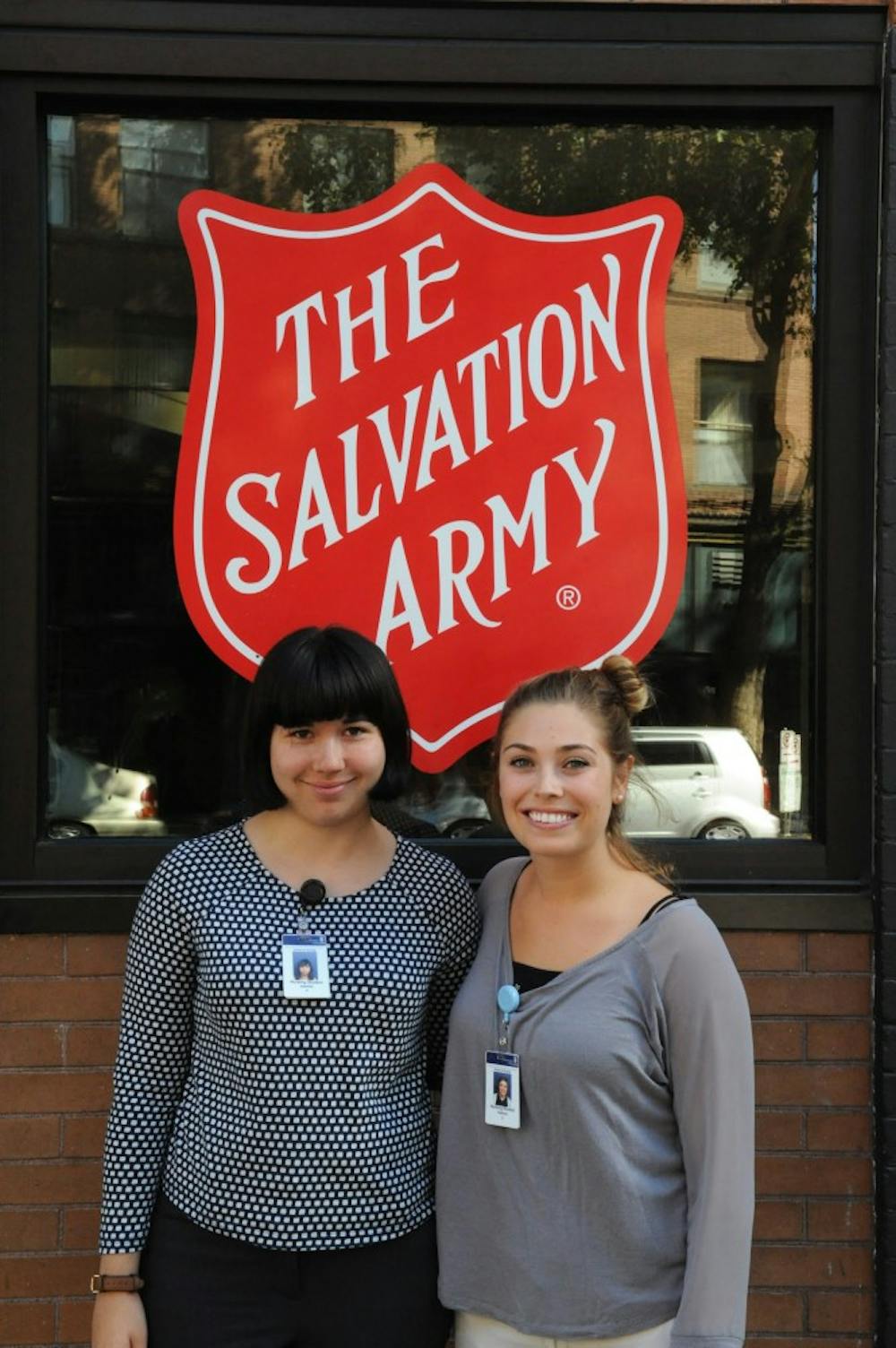Jacob Fuhrer |
They’re not so different from you and me.
That’s the takeaway of two senior nursing students working downtown with Portland’s homeless population each Thursday and Friday.
As part of their outside-the-classroom learning experience, Katie Stempel and Andrew Pritchett serve as student nurses who help answer questions and address medical needs of Portland’s homeless community. They assist with issues as small as a cut on the finger, to serious symptoms like chest pains.
Stempel says her job mostly involves forming relationships with women at the SAFES, the Salvation Army Female Emergency Shelter. The shelter’s goal is to empower women, “to move from homelessness to housing.”
It’s a job Stempel enjoys.
“I was really excited working with the homeless,” she said. “That’s where I want to do my nursing.”
Pritchett works at Jean’s Place and the Clark Center, which are operated by Transition Projects. Pritchett was more apprehensive about working at these transitional housing facilities because they are less structured, and there are anywhere from 60 to 90 patients at the facility. He said he is still never sure what to expect.
He recalled a woman asking him whether her STD treatment was effective.
“I had no clue,” Pritchett said.
Sally Cook, another senior nursing student, shares the same frustrations as Pritchett. Cook works at The Bud Clark Commons, which serves as a shelter for the homeless. Cook says it can be challenging to help patients who may have a wide range of medical needs.
Yet Cook says her classes at UP prepared her for the issues she deals with at her clinical placement. She is thankful for the professors who support her and her classmates along the way, but notes that the best way to learn is to get out in the field.
Cook and Stempel say there are no specific instructions given to them.
“We’re the professionals,” Stempel said. “We’re the final say when there’s no one else to ask.”
Because the patients are homeless, there are often no medical records to consult. However, the students notice a basic theme of trauma in the lives of the homeless. Whether it’s sexual abuse, neglect or emotional distress, Pritchett says in his experience, trauma is frequently involved, which he says leads many to substance abuse.
The location makes a difference too. SAFES is located in an area of downtown Portland known for its activity after dark.
“Everyone sees 2nd and Burnside as the place to party,” Stempel said.
But she says it’s completely different during the daytime when most of the homeless are around or at the shelters. Stempel had a woman come up to her at the front desk and tell her that she used to have Stempel’s job. The woman is homeless now. The experience made Stempel realize that anyone could be faced with homelessness.
“They’re doing the best they can,” she said.
Pritchett agrees. He says many people experiencing homelessness have managed to maintain their pride. He notices veterans at the men’s shelter are reticent to accept help, with some preferring to get their food at Sisters of the Road Cafe where they can work to earn their meals.
After experience with the homeless first hand, Pritchett and Stempel have come to like their jobs. Stempel likes the chance to meet new people.
“I’m not scared to say hello to a homeless person on the street,” she says.
Cook also enjoys her job, but remains frustrated at how much work remains to be done for Portland’s homeless community.
“It’s been hard feeling there’s such a huge need and we’re not even scratching the surface,” Cook said.
Jacob Fuhrer is a reporter for The Beacon. He can be reached at fuhrer17@up.edu.








